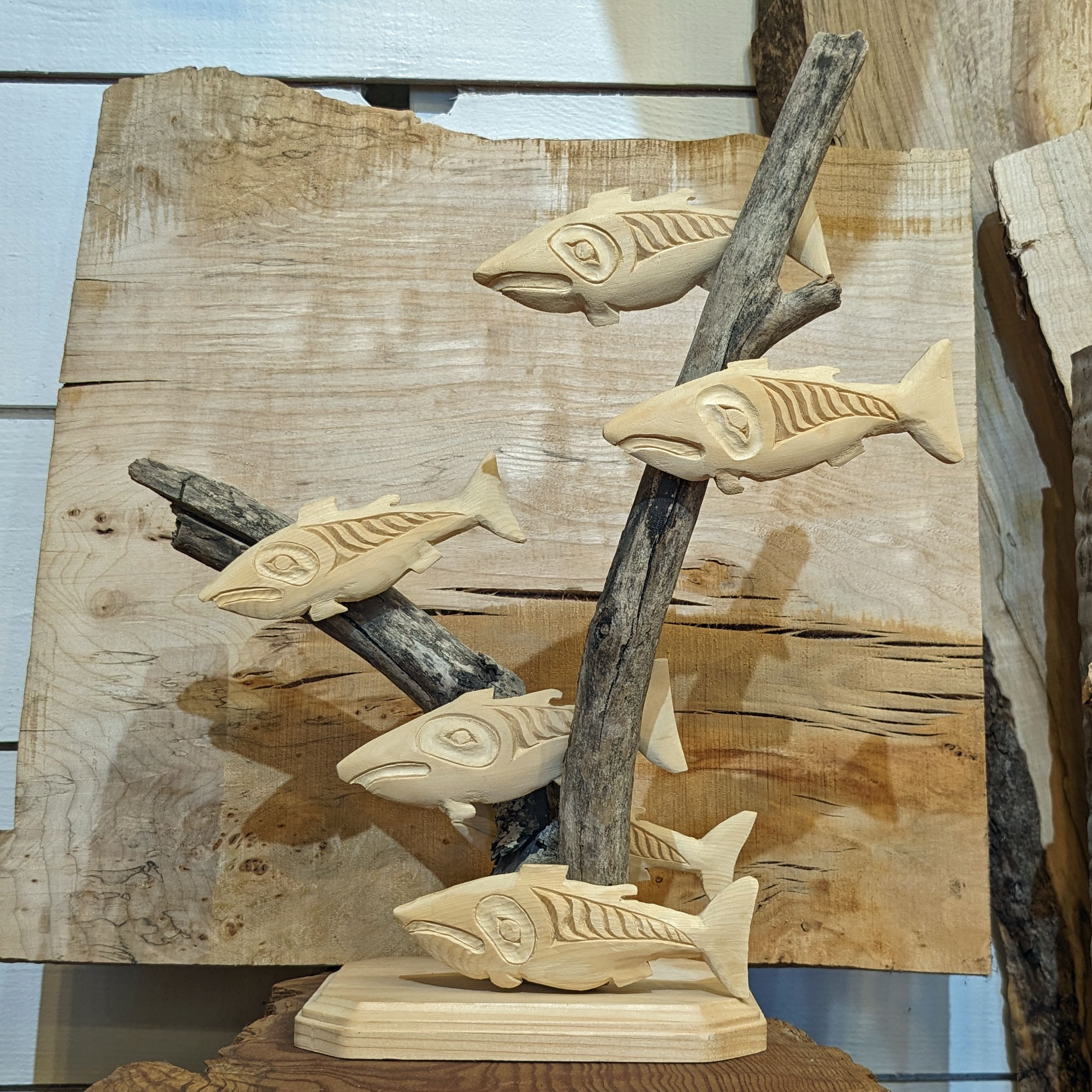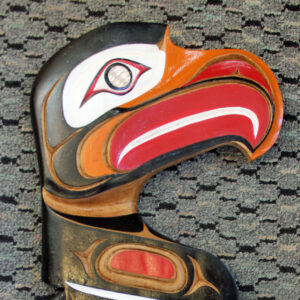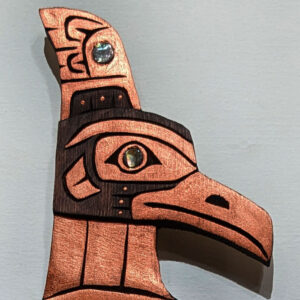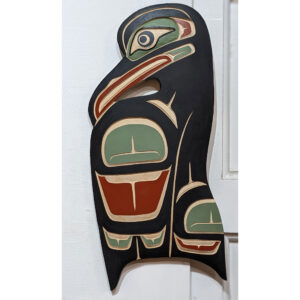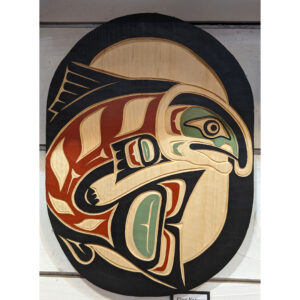Haida Salmon School Sculpture
$425.00
This Haida Salmon School Sculpture measures 15 x 14 x 7. Several carved salmon are depicted underwater resting near a submerged branch. Priced at $425.
The artist was born in Juneau, Alaska, and has established himself out of Sitka, becoming an artist that Sitkans take much pride in. He is a well known artist throughout Southeast Alaska and beyond. He is currently working out of his home in Port Townsend, Washington. His work ranges in size from small decorative pieces to large scale wall pieces and are intricate with beautifully hand crafted details.
As a descendant of the Haida Nation and a member of the Eagle Frog family, he takes pride in his native roots. This is at the heart of his journey in mastering this tribe’s unique art style.
From the time the artist was young he was fascinated with the work of Sitkan artists Benny Benson and Kermit Olson. He recalls delivering newspapers as a boy and stopping to watch as these artists labored over their amazing works of art.
At the age of 16, his artistic career was launched when his high school art teacher took a special interest in him and began teaching him principles of formline design and basic wood carving. Formlines are continuous, flowing, curvilinear lines that turn, swell and diminish in a prescribed manner. They are used for figure outlines, internal design elements and in abstract compositions. (Bill Holm, 1965.)
The artist further went on to teach himself the art of sketching, carving, and mastering the woodworking techniques which have enabled him to create many monumental pieces around Southeast Alaska. He gives credit to Bill Reid as one of the most influential artists behind many of his pieces.
His work is widely acknowledged and has been commissioned by major entities.
The term Haida Gwaii literally “Islands of the Haida people” and consists of two main islands, along with approximately 400 smaller islands, off the northern Pacific coast of Canada. The islands form the heartland of the Haida Nation, upon which people have lived for 13,000 years.
At the time of European contact in 1774, the population was roughly 30,000 people. It is estimated that ninety percent of the population died during the from smallpox and other diseases arriving with colonizers from Europe. By 1900, only 350 people remained.
The Eagle is known as “The master of skies” and is a symbol of great significance in indigenous culture. He is believed to be the creature with the closest relationship with the creator. Soaring to great heights, he can travel between the physical and the spiritual world. He is said to be a messenger to the creator. The eagle sends messages and prayers up to the Creator. If an Eagle was seen during a Prayer session it was a sign of having a prayer accepted. If a prayer needed immediate attention from the creator, an eagle feather would be held up towards the sky. Although every part of the eagle has separate and significant meanings, the Eagle as a whole signifies focus, strength, peace, leadership, and ultimate prestige.

